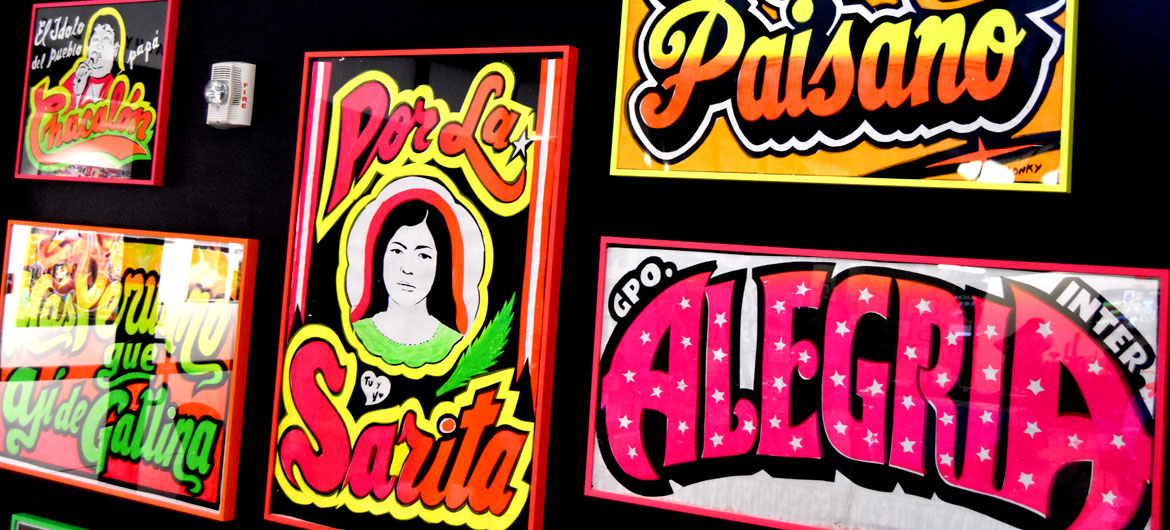In Peru in the 1980s, a new music exploded in popularity on the radio: Chicha. The word can refer drinks made from purple corn or fermented fruit and grains, but it’s also become the name of a whole musical and visual aesthetic. Bands like Alegria, Los Shapis and Chacalon took the indigenous Huayno music—that migrants from the Andes and Amazon brought with them when they settled in the capital, Lima, in 1960s and ‘70s—and added electric guitars. Along with the music’s popularity came a boom in posters to promote the shows.
In the 1980s, Pedro “Monky” Rojas Mesa was one of the leading designers who helped revolutionize Peruvian concert posters by shifting from blocky letters to flowing calligraphy and incandescent colors—inspired by the bright red, yellow, green and pink of indigenous Huancayo embroideries. Pasted up all over Lima, his graphics sparked a movement.
Monky is one of the artists featured in “Revolución Chicha: Street Art & Graphics of Peru,” organized by Director of Exhibitions Andrew Mroczek at Lesley University’s Lunder Arts Center, 1801 Massachusetts Ave., Cambridge, from Sept. 3 to Dec. 31, 2019.
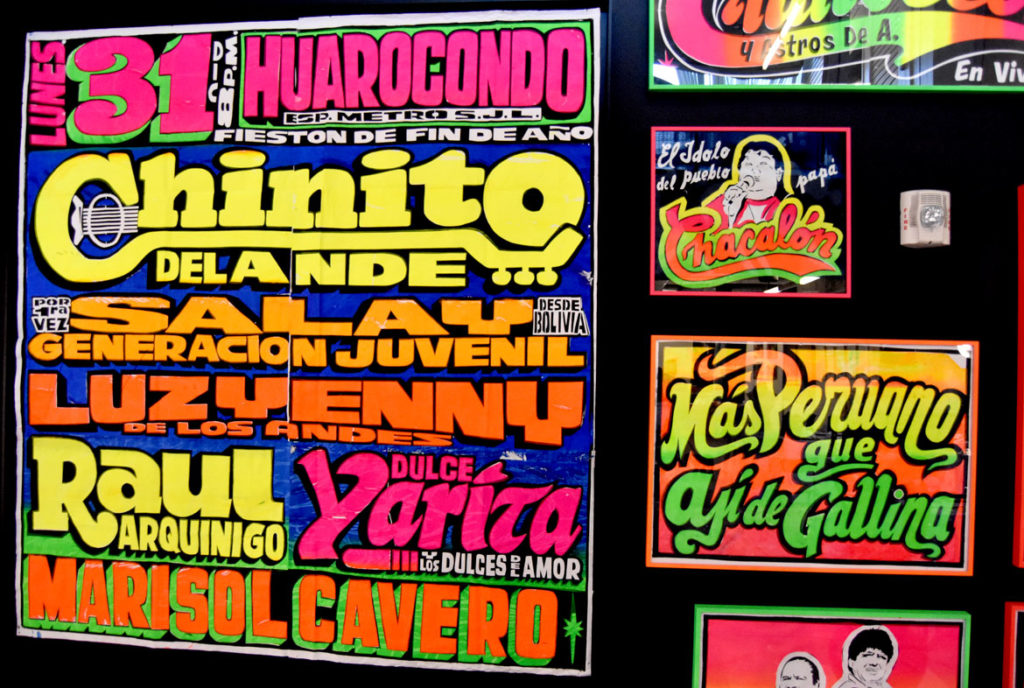
“Born in the 1980s as the result of a clash between indigenous and colonial cultures,” an exhibition sign explains, “Chicha art has long been associated with Peru’s ‘lower classes.’ Originally used to advertise musical events, it has been revived by a new generation of artists and activists.”
Chicha art represents an assertion of cultural pride and power by indigenous and working class citizens of Lima. Elliot Tupac expanded from concert posters to painting murals championing indigeous culture. in Lima’s wealthy Miraflores neighborhood, Tupac painted “Cholo Power,” redefining the insult “cholo” for a person of indigenous American or mestizo heritage. Bidkar Yapo of Nacion Chicha rewrote the beginning of Peru’s national anthem from “Somos libres, seamoslo siempre (We are free; let us always be so)” to “Somos cholos, seamoslo siempre (We are cholos; let us always be so).”
Moises Sants launched UPUS Peru (Unidos por un Sueno/United by a Dream) in 2017 to promote more joy generally. His one-of-a-kind drawings and paintings proclaim “Sonrie es Gratis (Smile It’s Free)” and “Soy Feliz Con Todo Mi Corazon (I Am Happy with All My Heart).”
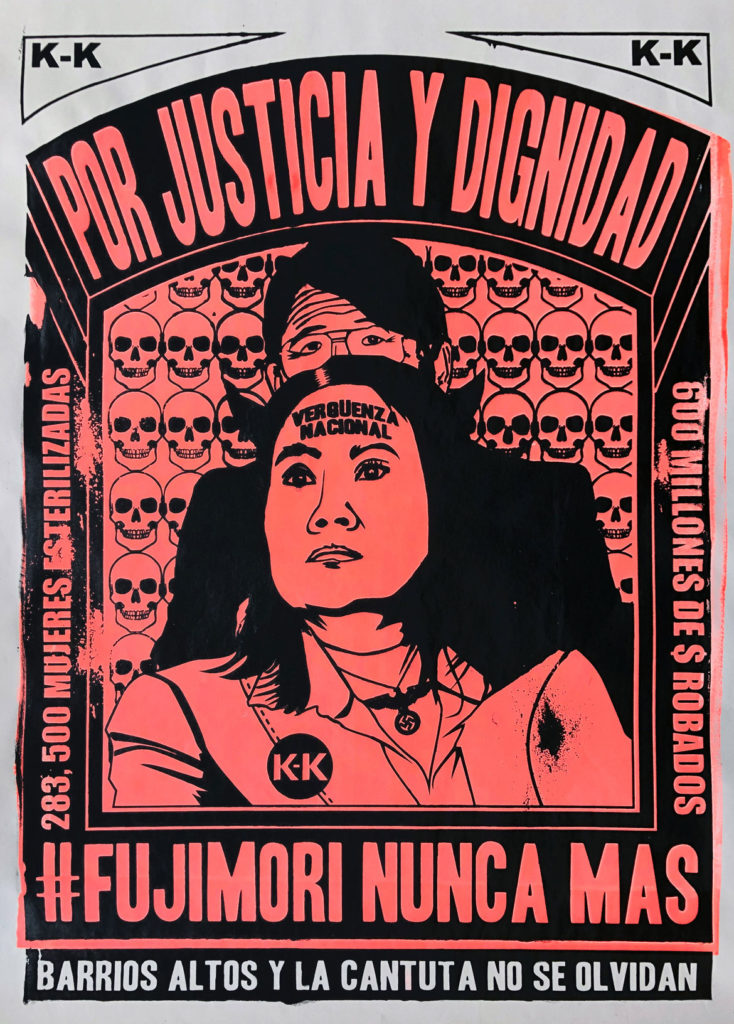
Chicha art has also become a vehicle for protest. Posters by Samuel Gutierrez of Familia Gutierrez shout “Amazonia Resiste (The Amazon Resists)”: “The jungle can’t be sold, the jungle is defended.” Nacion Chicha supports women’s rights with the slogan “Free and Fearless” and champions LGBTQ rights with rainbow lettering reading “Amor es Amor (Love is Love).”
The posters of Amapolay—Fernando Castro and Carol Fernandez—stridently advocate the defense of Amazon lands from logging, promote indigenous rights and oppose President Alberto Fujimori administration’s forced sterilization of indigenous women and mass murders. Their 2016 screenprint “Verguenza Nacional (National Shame)” reads: “Por Justica y Dignidad (For Justice and Dignity)”; “283,500 Mujeres ESterilizadas (283,500 Women Sterilized)”; “600 Millones de $ Robados ($600 Million Stolen)”; “Fujimori Nunca Mas (Fujimori Never Again)”
A 2017 Amapolay screenprint reads: “314,605 mujeres fueron esterilizadas sin saber en el marco del programa nacional de planificacion familiar del gobierno de alberto Fujimori. Esterilaciones Forzados. Nunca Mas. Fujimori Nunca Mas. (314,605 women were sterilized without their knowledge under the national family planning program of the government of Alberto Fujimori. Forced Sterilizations Never Again. Fujimori Never Again.)”
If this is the kind of coverage of arts, cultures and activisms you appreciate, please support Wonderland by contributing to Wonderland on Patreon. And sign up for our free, weekly newsletter so that you don’t miss any of our reporting.
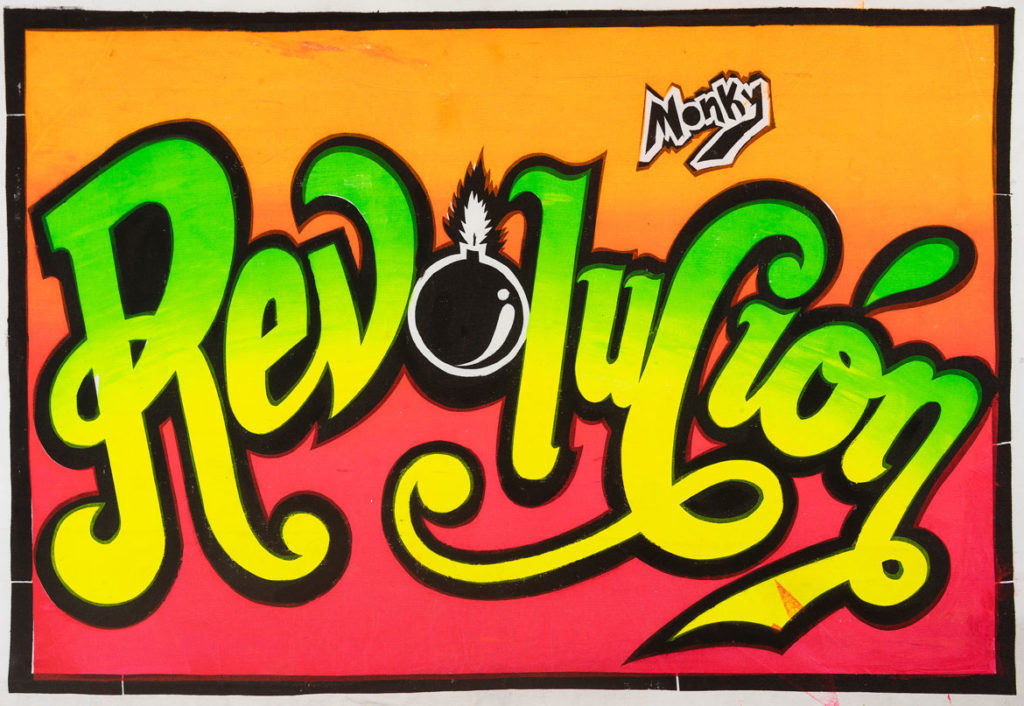
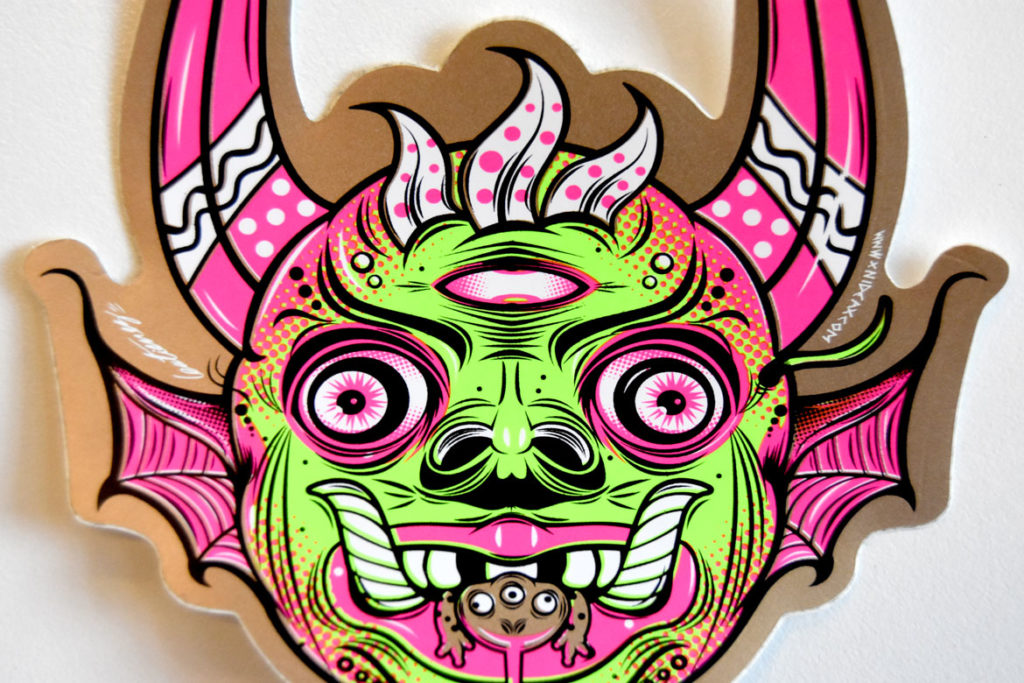
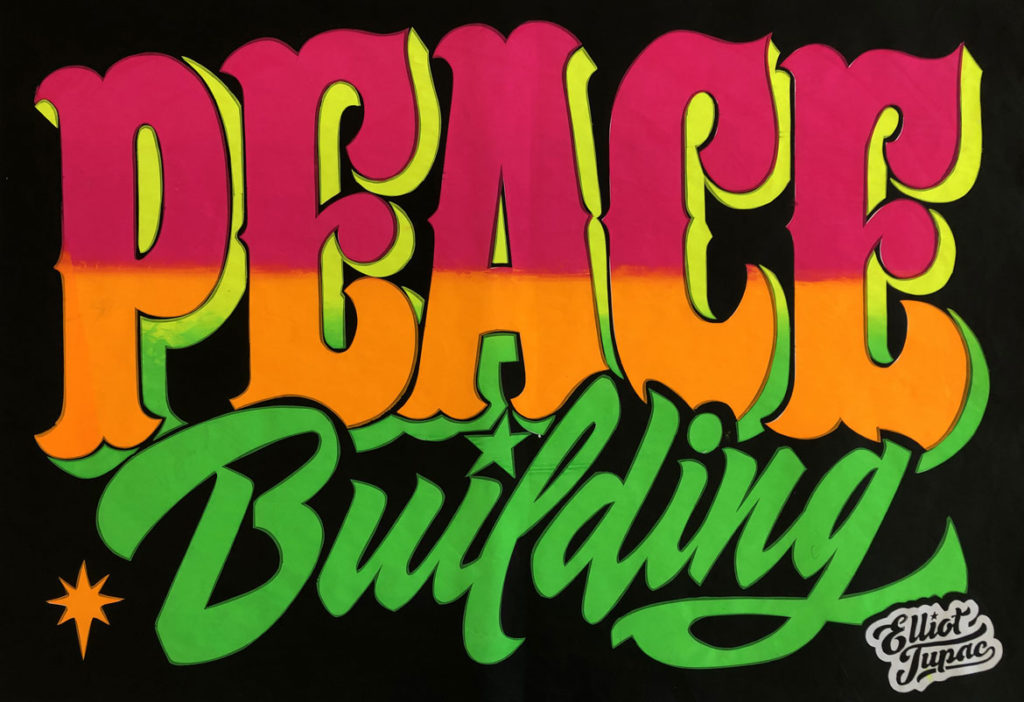
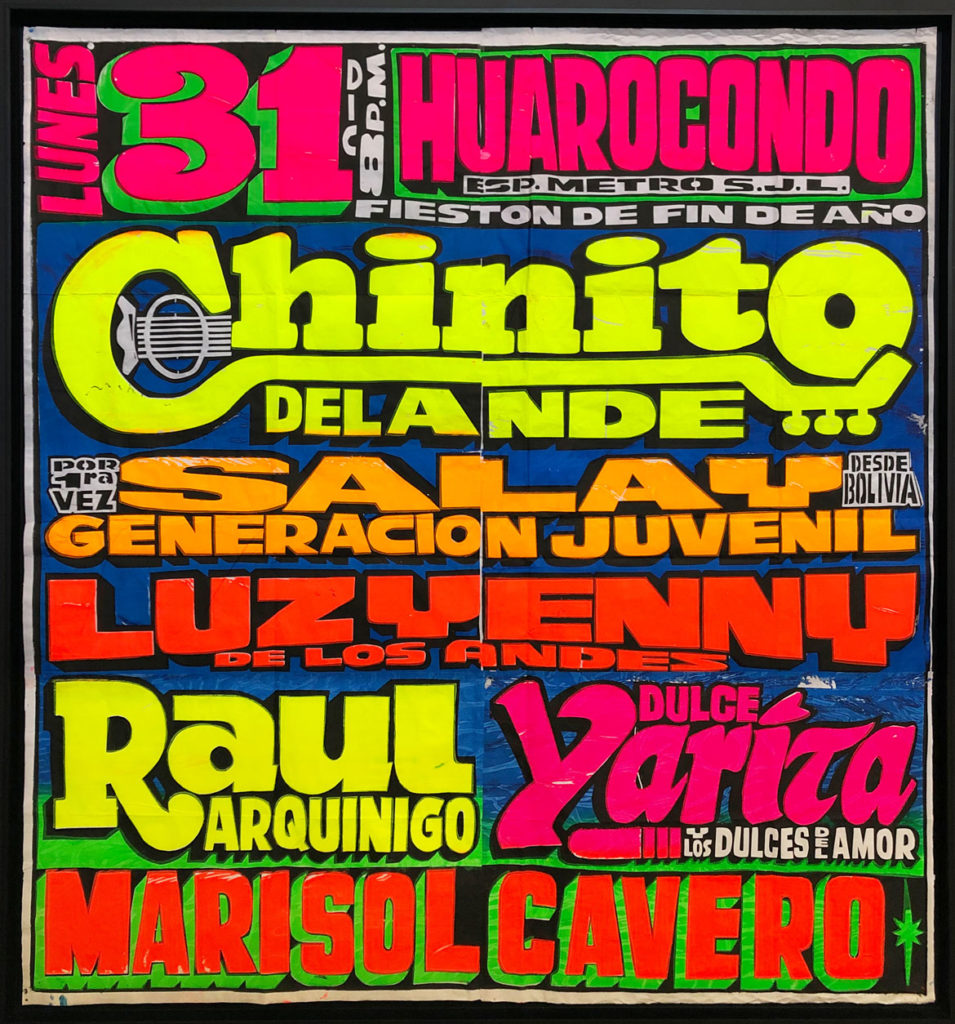
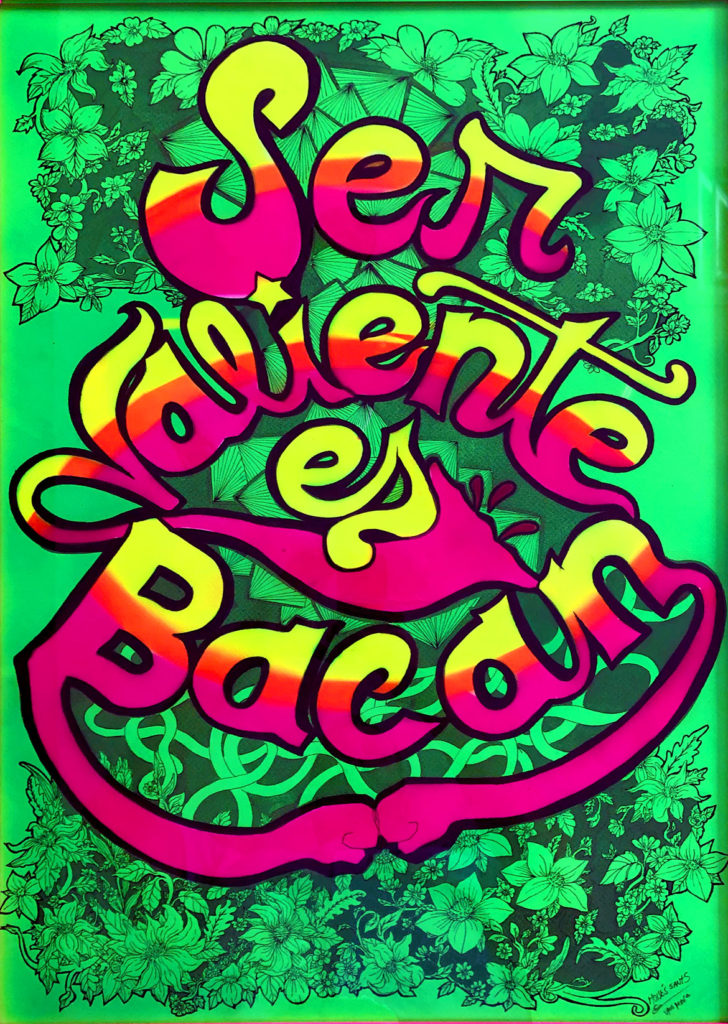
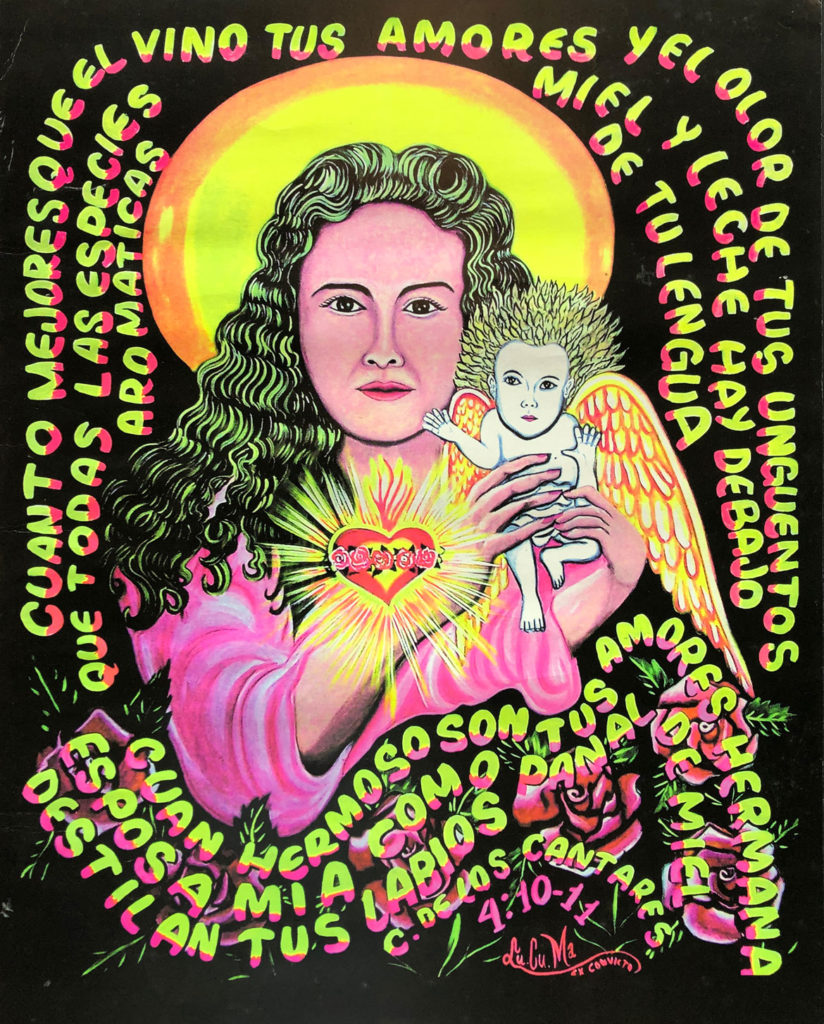
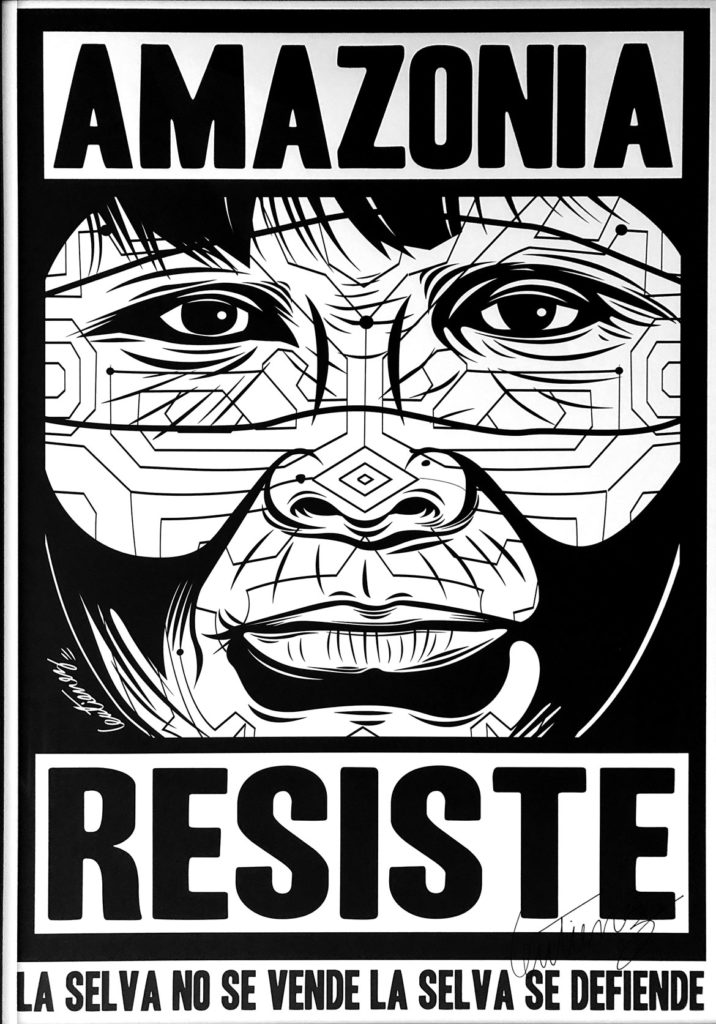
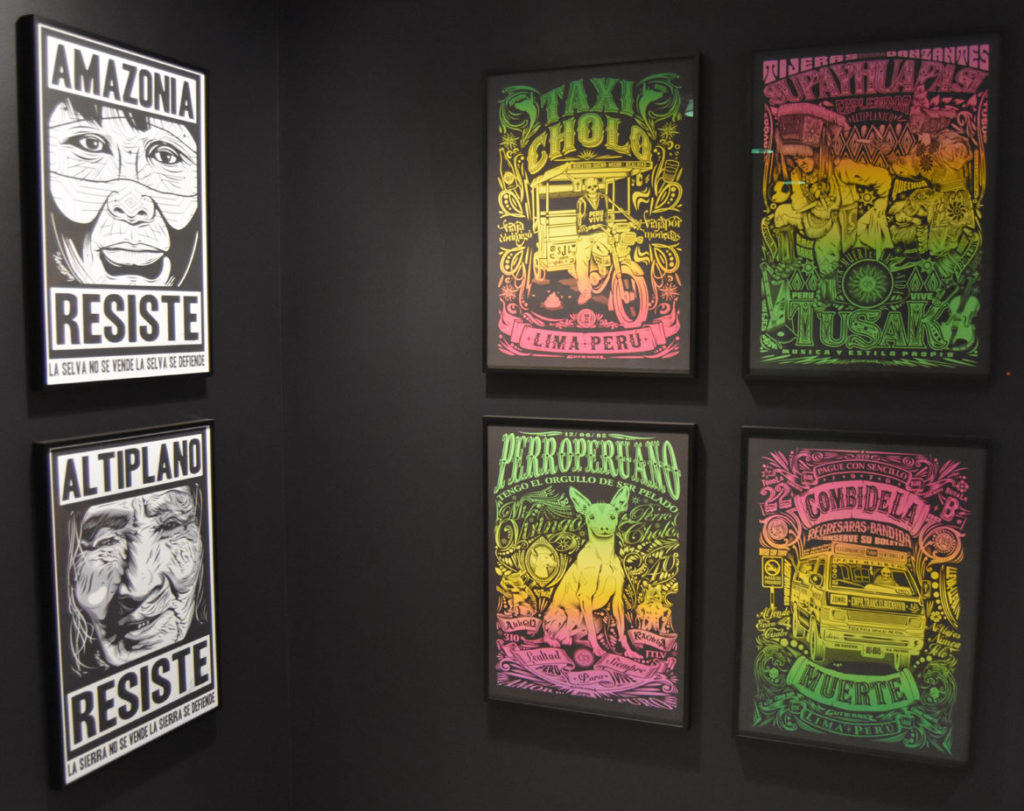
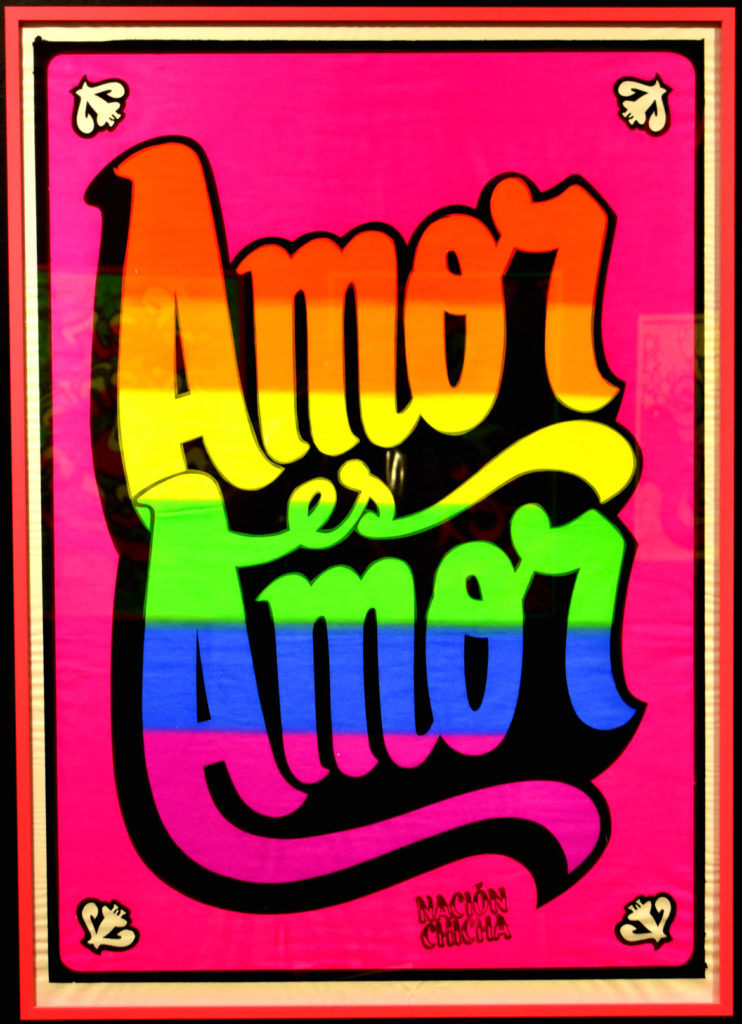
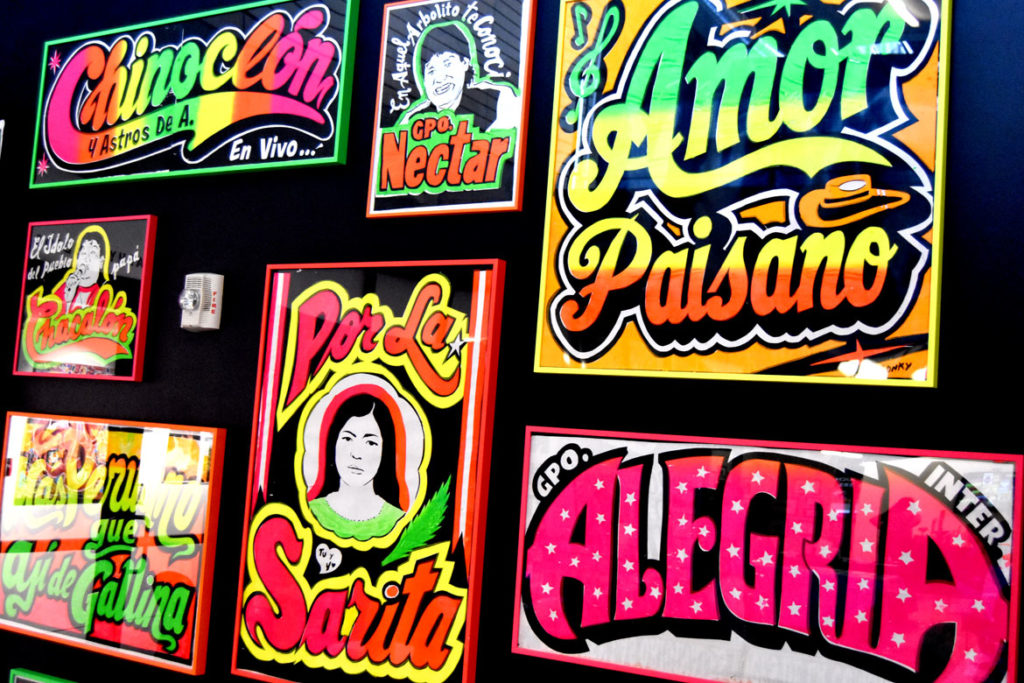
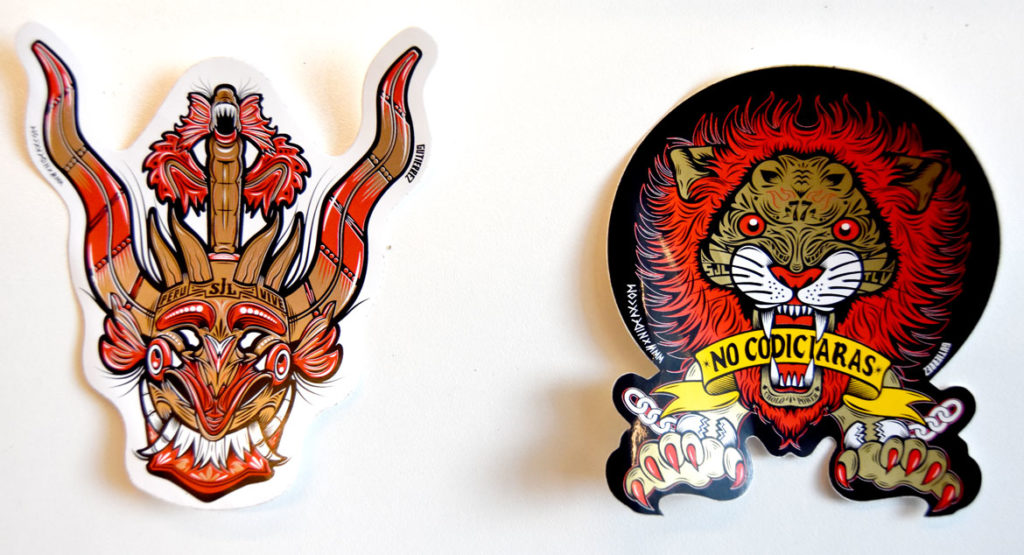
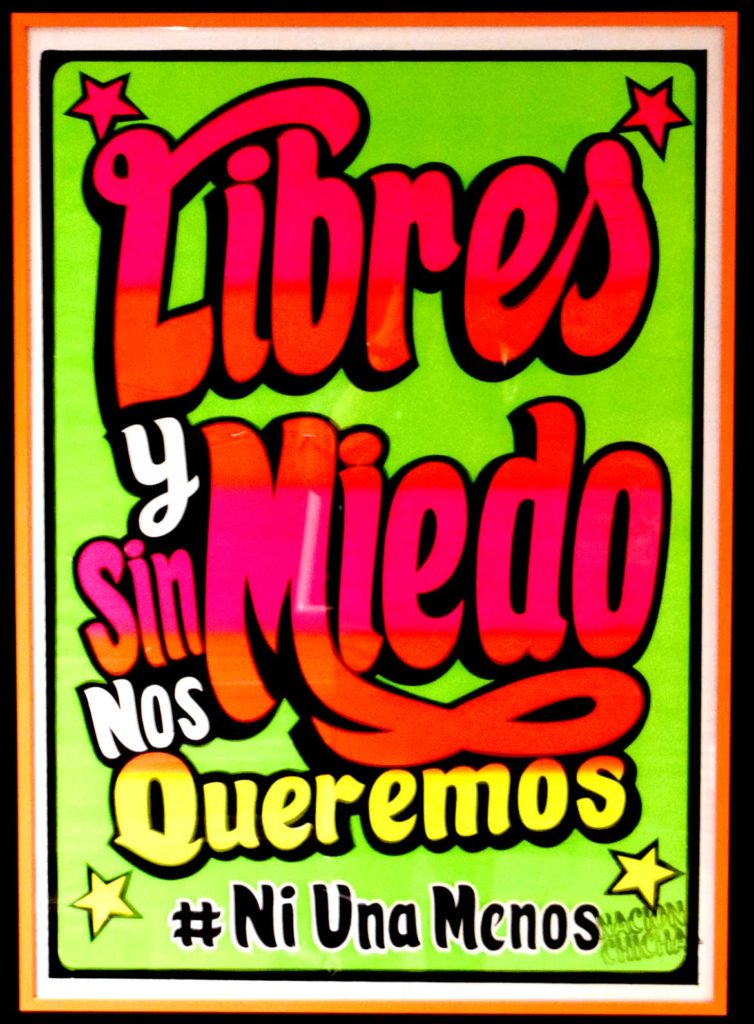
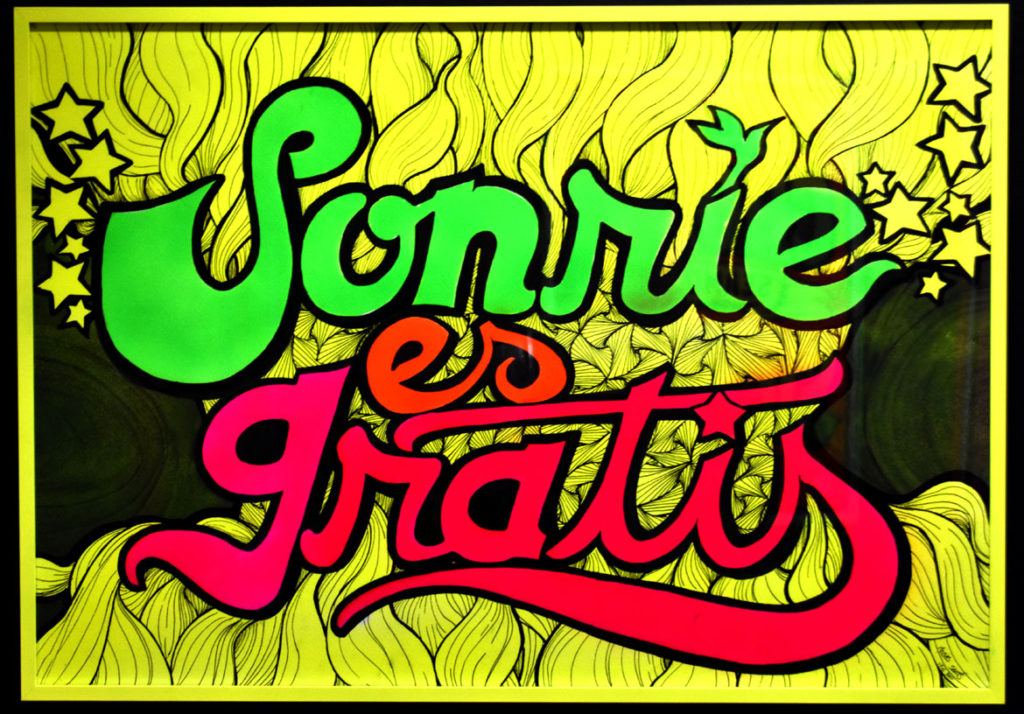
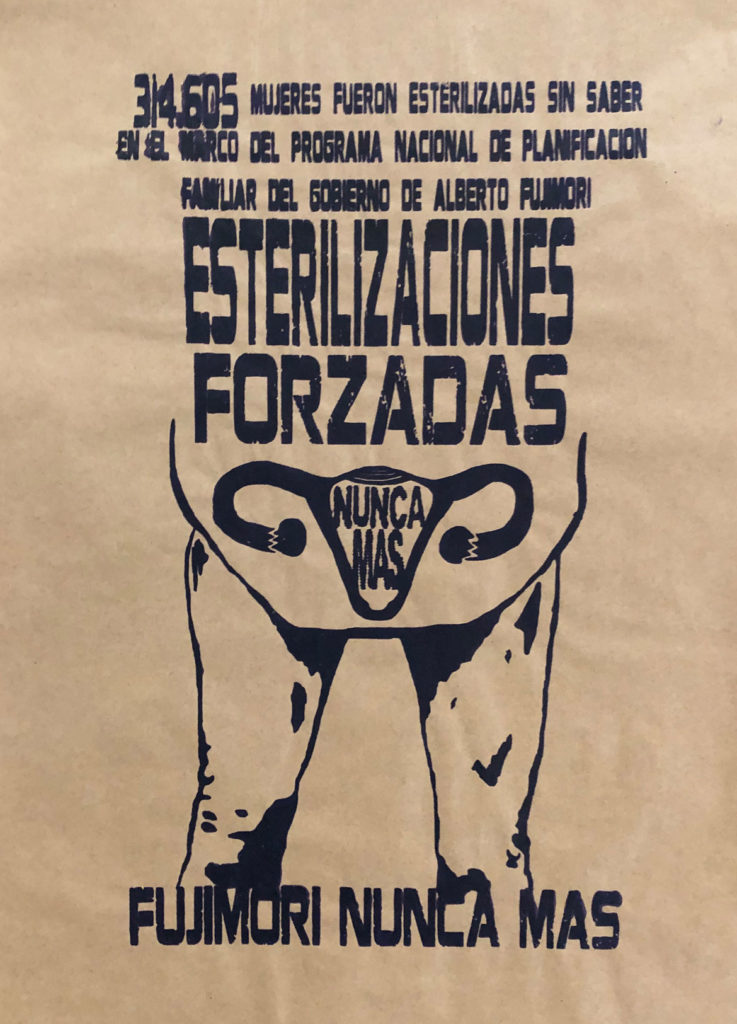
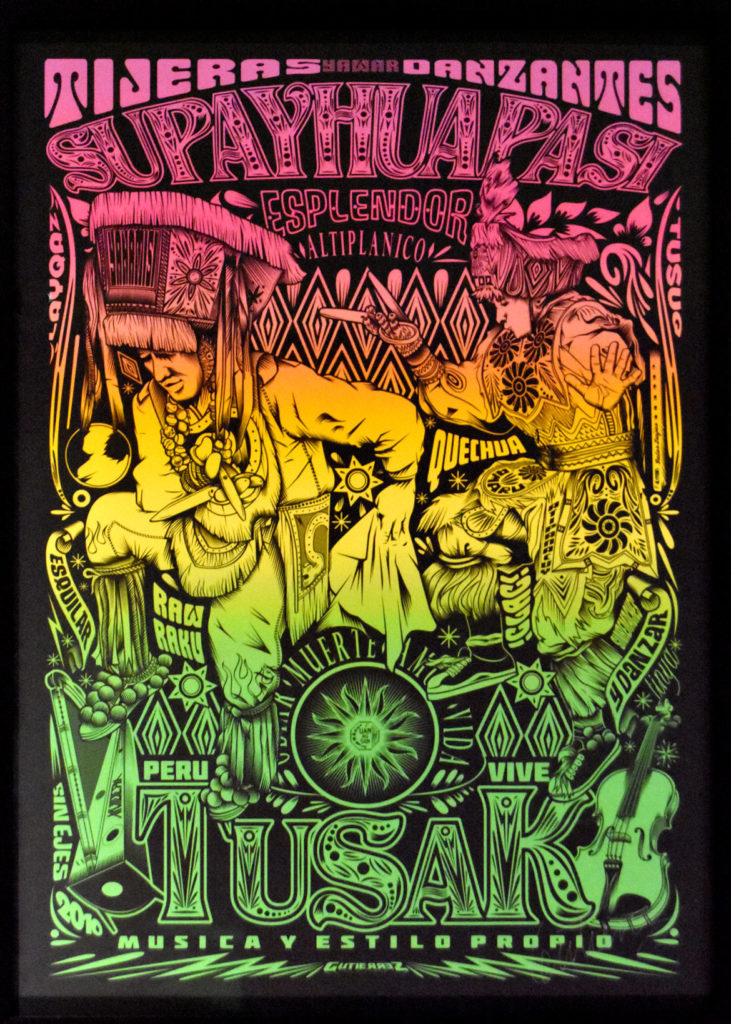
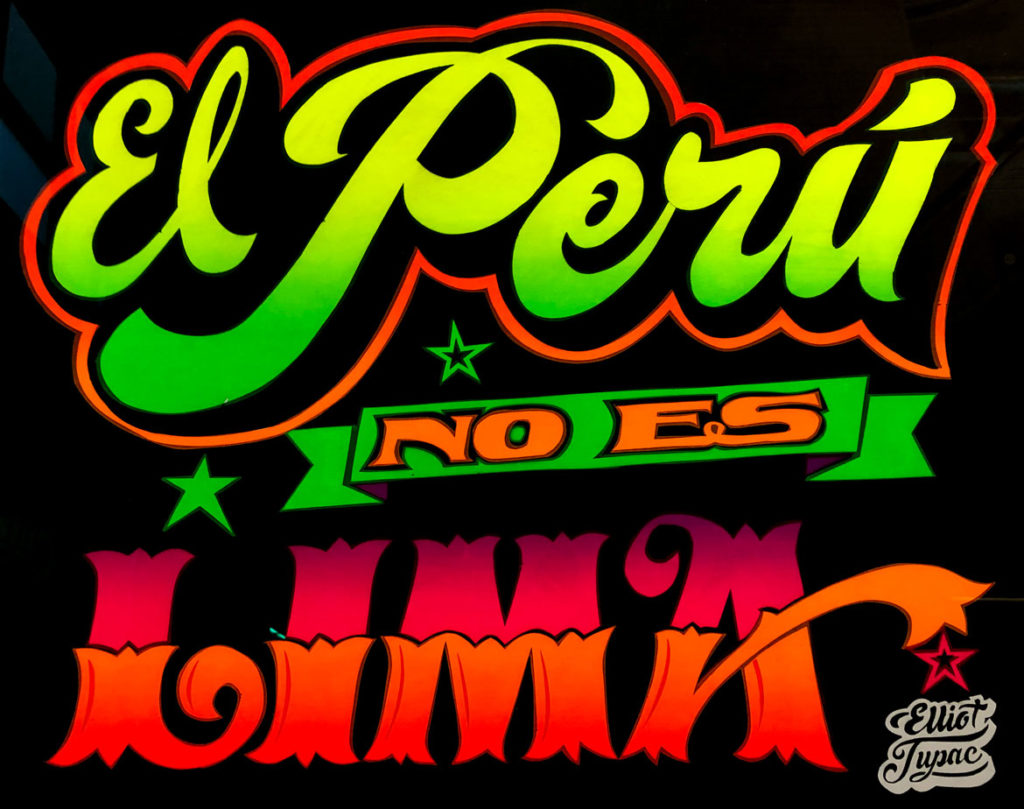
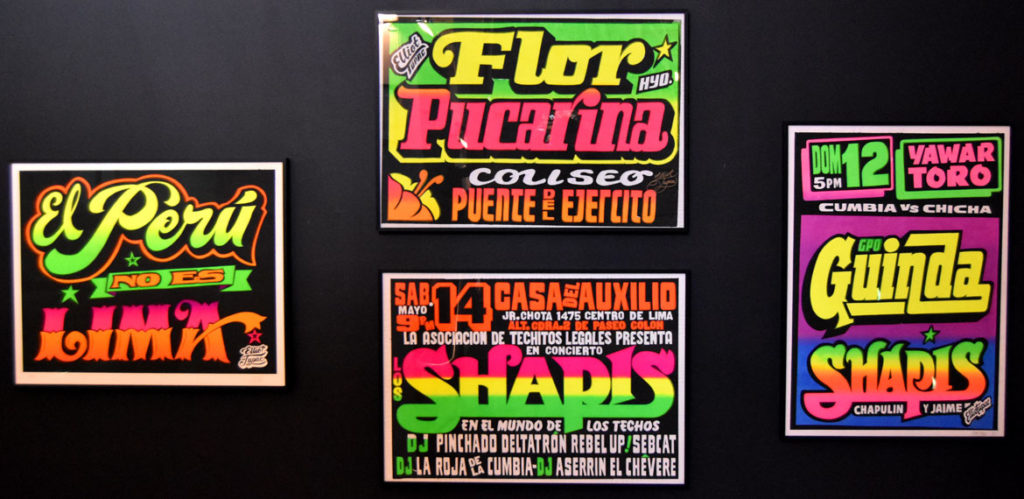
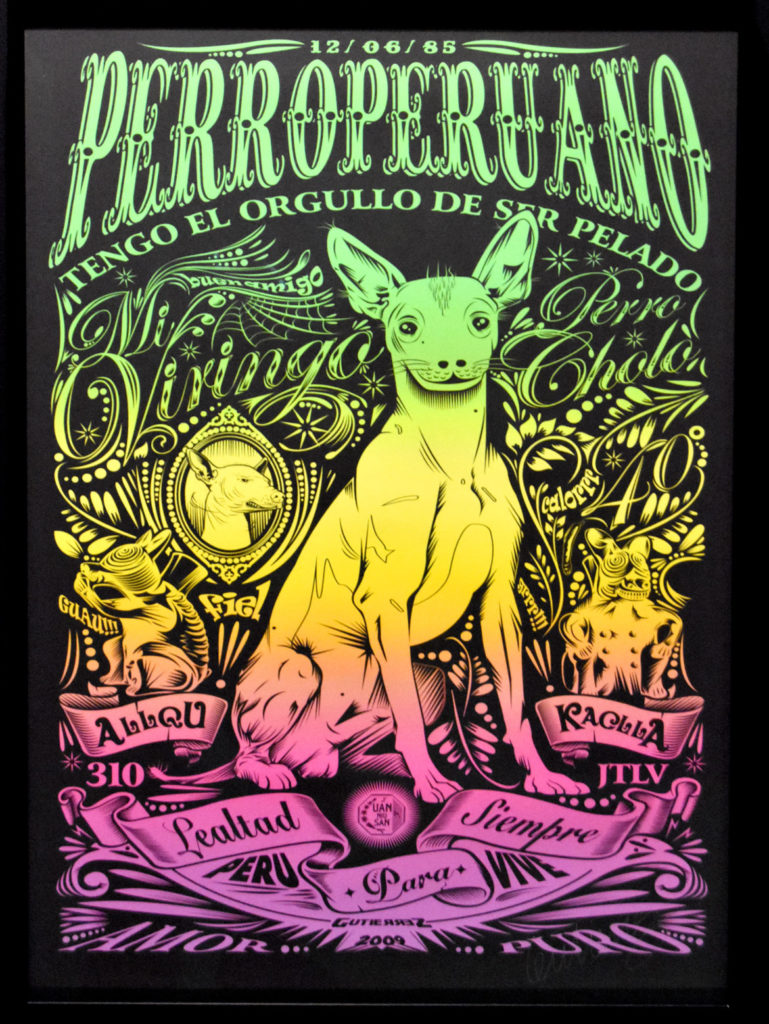
If this is the kind of coverage of arts, cultures and activisms you appreciate, please support Wonderland by contributing to Wonderland on Patreon. And sign up for our free, weekly newsletter so that you don’t miss any of our reporting.
